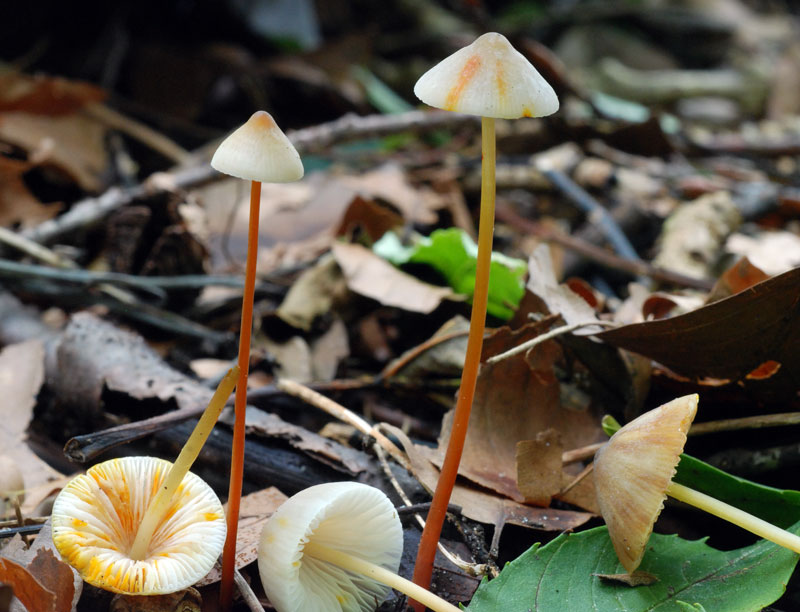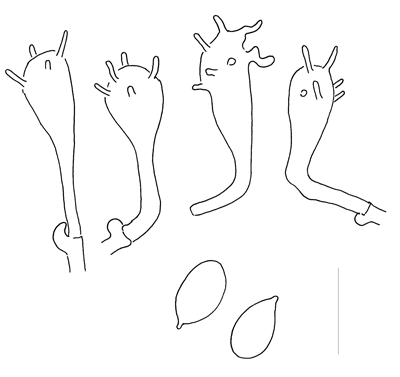Mycena crocata
Mycena crocata
- Innhold
- Description
- Ecology and distribution
Description
Cheilocystidia and spores.
Cap 5-25 mm across, conical or campanulate to parabolical with a small papilla, pruinose, glabrescent, shallowly sulcate, slightly translucent-striate, dark red-brown at the centre, orange-brown to grey brown farther outwards, paler to grey or whitish towards the margin, often stained with yellow-red to orange-red spots. Gills 15-25 reaching the stem, adnexed, white, often stained with yellow-red to orange-red spots. Stem 50- 95 x 1-2 mm, cylindrical equal, firm, pruinose to minutely puberulous all over, more or less glabrescent, often remaining pruinose at the apex, glabrous below, shiny, pale yellow to orange yellow above, darker orange below, bright orange to reddish at the base, rooting; exuding safran-red juice when cut, the base densely covered with long, coarse, whitish to orange-yellow fibrils. Odour indistinctive. Basidia 30-37 x 8-10 µm, clavate, 4-spored. Spores 8.2-10.5 x 5-7 µm, Q = 1.4-1.8, Qav ˜ 1.6, pip-shaped, amyloid. Cheilocystidia 19-32 x 7-14 µm, forming a sterile band, covered with few, ± evenly spaced, simple, cylindrical, straight to somewhat curved excrescences 1-8 x 0.9-2 µm, sometimes longer, irregularly inflated and branched. Pleurocystidia scarce, clavate, smooth or with few excrescences. Lamellar trama weakly dextrinoid. Hyphae of the pileipellis 1-4 µm wide, covered with simple to furcate or somewhat branched excrescences 1-6.5 x 1-2 µm. Hyphae of the cortical layer of the stem 1-3 µm wide, sparsely covered with simple, cylindrical excrescences 1-5.5 x 0.5-1 µm, terminal cells 3.5-7 µm wide, subcylindrical to clavate, diverticulate. Clamps present in all tissues.
Ecology and distribution
On fallen, decaying Fagus branches and trunks, more rarely on other hardwood hosts, such as Alnus and Betula. Late summer to late autumn. Scattered in the Fagus area.

